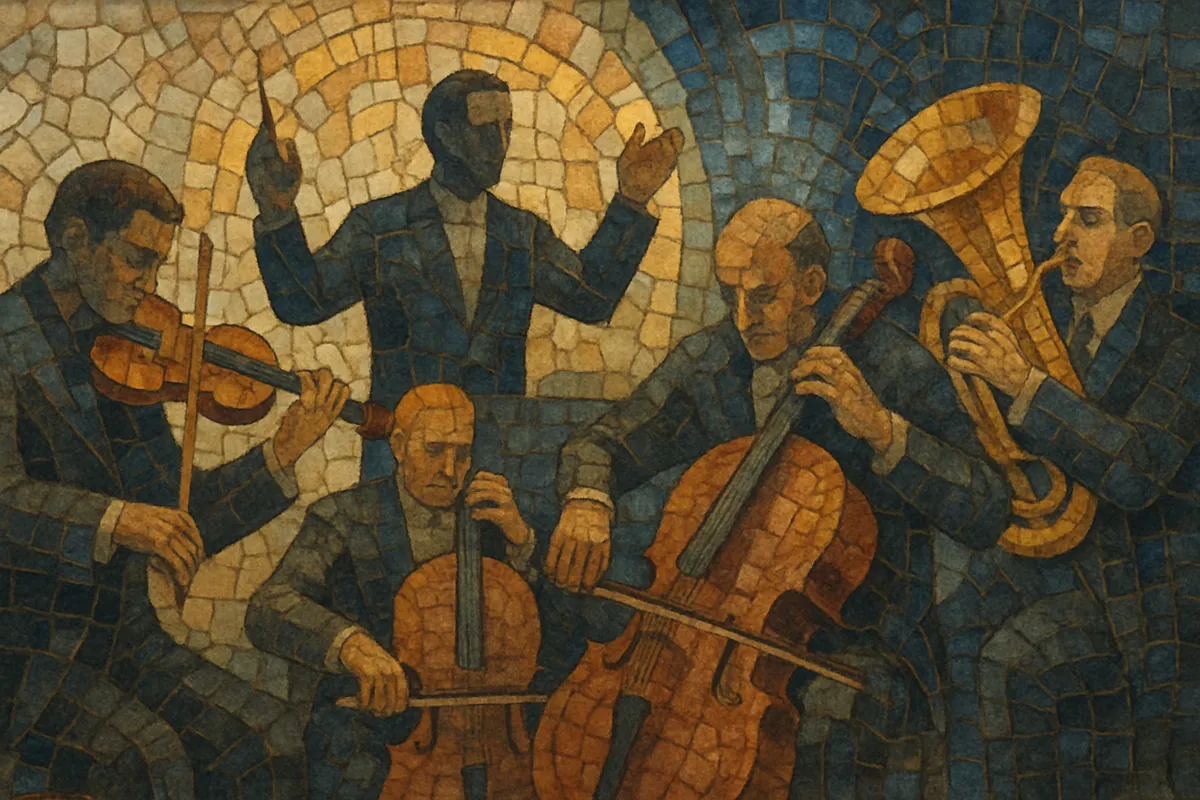Orchestral music refers to compositions written for an orchestra—a large ensemble typically built around a string section (violins, violas, cellos, double basses), complemented by woodwinds, brass, percussion, and often harp, keyboard, or other auxiliary instruments. A conductor coordinates the ensemble, shaping balance, phrasing, and expression.
The style emphasizes coloristic timbre combinations, dynamic range from the softest pianissimo to explosive tuttis, and textures that can shift seamlessly between transparent chamber-like writing and monumental masses of sound. Orchestral writing underpins concert genres such as symphonies, overtures, and tone poems, as well as opera, ballet, and modern film and game scores.
While orchestral writing evolved across centuries, its core craft centers on melody, counterpoint, harmony, register, and orchestration—the art of assigning musical ideas to instruments to achieve clarity, contrast, and narrative impact.
The orchestra coalesced in early Baroque Italy, where court and theater ensembles grew around a standardized string choir. Composers like Claudio Monteverdi expanded instrumental forces in works such as L’Orfeo (1607), while Jean-Baptiste Lully formalized French orchestral discipline and bowings at the court of Louis XIV. Baroque forms—including the concerto grosso and the baroque suite—shaped early orchestral textures and roles, establishing the string section as the ensemble’s foundation.
In the Classical era, orchestral forces and forms stabilized. The Mannheim school advanced techniques such as dynamic swells and precision articulation. Joseph Haydn and Wolfgang Amadeus Mozart codified symphonic and operatic orchestration, while Ludwig van Beethoven dramatically expanded expressive range, harmonic tension, and instrumentation, setting the stage for the Romantic orchestra.
Romantic composers enlarged the orchestra and pursued vivid narrative color. Hector Berlioz’s Treatise on Instrumentation (1844) systematized orchestration practice. Composers such as Tchaikovsky, Mahler, Wagner, and Rimsky-Korsakov introduced richer harmonic palettes, novel timbres (including expanded brass and percussion), and programmatic forms, culminating in massive ensembles and sweeping emotional arcs.
Debussy and Ravel refined color and transparency, while Stravinsky and others explored rhythm and sonority in new ways. Orchestral technique became central to film scoring from the 1930s onward, blending late-Romantic language with modern harmony and leitmotivic design. Composers embraced extended techniques, new percussion, and occasional electronics.
Today, orchestral writing lives in concert halls, cinemas, and game soundtracks. Hybrid scores mix orchestra with synthesizers and sound design. Crossovers—symphonic rock/metal, orchestral jazz, and post-classical—draw on the orchestra’s timbral depth while adopting new rhythms, harmonies, and production methods.


